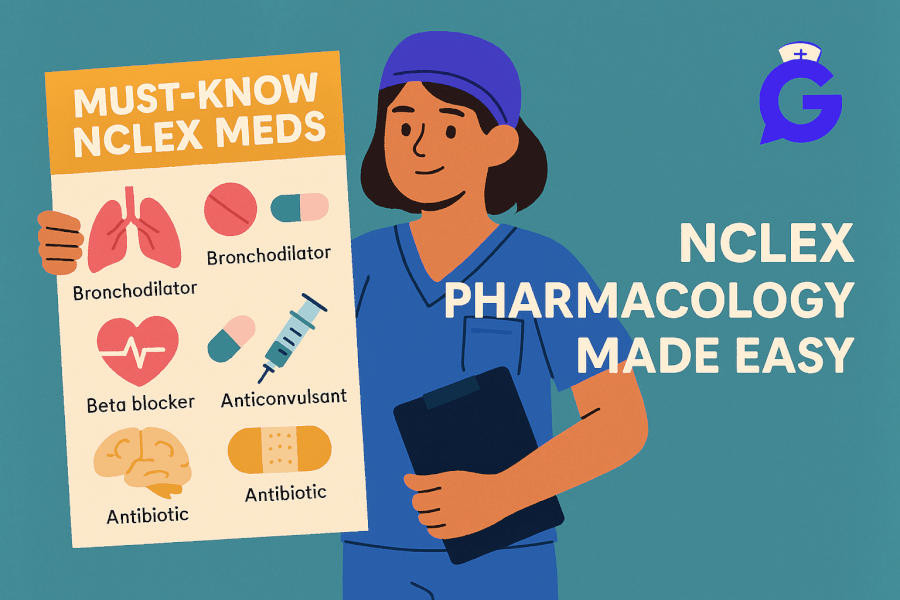How to Become a Registered Nurse Through LPN-to-RN Bridge Programs in 2025: Your Complete Guide
Updated: April 2025 | Author: Jane Doe, RN, BSN
Ready to level up from Licensed Practical Nurse (LPN) to Registered Nurse (RN)? In 2025, LPN-to-RN bridge programs offer a fast, flexible, and cost-effective way to elevate your nursing career. Designed for working LPNs, these programs build on your experience, preparing you for the NCLEX-RN and unlocking greater autonomy, higher pay, and a world of professional opportunities. This comprehensive guide covers program types, admissions, costs, exam prep, and career growth—everything you need to transition to RN status in today’s dynamic healthcare landscape.
1. Why Bridge from LPN to RN?
Moving from LPN to RN transforms your scope, salary, and career trajectory. RNs take on advanced responsibilities and enjoy broader opportunities in a healthcare system increasingly reliant on skilled nurses. Here’s why it’s worth it in 2025:
- Scope of Practice: RNs independently assess patients, start IVs, create care plans, and manage emergencies—tasks beyond LPN limits.
- Salary Boost: RNs average $85,600 in 2025 (BLS estimate), a 55% jump from the LPN’s $55,000, with top roles exceeding $100,000.
- Career Access: Qualify for high-demand specialties (ICU, ER), leadership (charge nurse), and graduate paths (NP, DNP).
2025 Context: With RN shortages persisting and telehealth expanding, bridging to RN aligns with employer needs and patient care trends.
2. Types of LPN-to-RN Programs
LPN-to-RN bridge programs credit your prior training, shaving years off traditional RN education. Choose between two main tracks:
- LPN-to-ADN: Earn an Associate Degree in Nursing in 12–18 months. Ideal for quick RN licensure and entry-level hospital or clinic roles.
- LPN-to-BSN: Achieve a Bachelor of Science in Nursing in 24–36 months. Preferred by 80% of employers (AACN, 2025), it’s your ticket to leadership, specialties, and grad school.
Format Options in 2025:
- Online/Hybrid: Online coursework with local clinicals—perfect for working LPNs balancing shifts.
- On-Campus: Full immersion, often accelerated, at community colleges or universities.
- Competency-Based: Self-paced programs (e.g., WGU) let you test out of familiar material, cutting time for experienced LPNs.
Trend Alert: In 2025, hybrid models dominate, with VR simulations enhancing clinical training remotely.
3. Admissions Requirements
Bridge programs streamline entry for LPNs but still have gatekeepers. Typical requirements include:
- Active LPN License: Must be current and unencumbered (no disciplinary actions).
- Education: High school diploma or GED, plus LPN program transcripts.
- GPA: Minimum 2.5–3.0 from LPN coursework.
- Prerequisites: College-level anatomy, physiology, microbiology, English, and psychology (6–12 months if not completed).
- Entrance Exams: TEAS (58–70% passing) or HESI A2—some waive this with strong LPN grades.
- Health & Background: Immunizations (e.g., flu, hepatitis B), negative TB test, clean criminal record, and drug screen.
Pro Tip: Ask your employer about partnerships—some hospitals fund bridge programs for staff, cutting costs and securing your spot.
SEO Tip: Search “LPN-to-RN bridge programs near me” for local options.
4. Program Length & Curriculum
Program duration depends on your track and transferable credits:
- LPN-to-ADN: 12–18 months full-time; 2–3 years part-time.
- LPN-to-BSN: 24–36 months full-time; 3–4 years part-time. Prior college credits can trim this to 18–24 months.
Curriculum Highlights:
- Advanced Sciences: Pathophysiology, pharmacology, and diagnostics.
- RN Skills: Care coordination, critical thinking, and patient assessment.
- Leadership & Theory: Ethics, health policy, and evidence-based practice (BSN focus).
- Clinicals: 200–400 hours in med-surg, pediatrics, OB/GYN, and psych.
2025 Update: Programs integrate telehealth workflows, AI-driven charting (e.g., EHRs), and cultural competency to meet modern RN demands.
5. Costs & Financial Aid
Bridge programs are affordable compared to traditional RN paths, with costs varying by format:
- Community College ADN Bridge: $6,000–$15,000 total (in-state rates: $100–$200/credit).
- University BSN Bridge: $15,000–$35,000 (public: $300–$500/credit; private: $600–$1,000/credit).
- Online Programs: $10,000–$25,000, often with flat rates for working nurses.
Extras: Books, fees, and clinical supplies add $1,000–$2,000.
Financial Aid Options:
- Federal Aid: FAFSA grants (e.g., Pell, $7,395 max in 2025) and loans.
- Scholarships: Nurse Corps, AACN, or state-specific awards for LPNs.
- Employer Support: Many hospitals reimburse tuition or offer loan forgiveness for RNs committing 2–3 years post-graduation.
ROI: The $30,000+ salary jump often pays off within 2–3 years.
6. NCLEX-RN Exam Overview
The NCLEX-RN is your final hurdle to RN licensure, testing your readiness for advanced nursing. Key details:
- Format: Computer-adaptive, 75–145 questions via Pearson VUE (2–6 hours).
- Content Areas: Management of care (20%), pharmacology (15%), safety/infection control (12%), psychosocial/physiological integrity (50%+).
- 2025 Update: New questions on telehealth, informatics, and culturally sensitive care reflect 2025 trends.
- Pass Rate: ~87% for first-time U.S.-educated candidates in 2024; expect similar in 2025.
Prep Strategies: Leverage your LPN experience with tools like UWorld (2,000+ practice questions), Kaplan, or Saunders NCLEX-RN books. Aim for 6–12 weeks of study, focusing on weak areas (e.g., prioritization, delegation).
Cost: $200, plus state fees ($50–$150).
7. Salary & Career Growth After RN
Becoming an RN in 2025 delivers immediate and long-term rewards:
- RN Average Salary: $85,600 annually (BLS 2025 estimate). BSN holders often hit $90,000+.
- High-Paying Roles: ER ($95,000), ICU ($100,000), OR ($98,000), travel nursing ($110,000+).
- Job Growth: 6% from 2022–2032, adding 193,000+ RN jobs—fueled by aging populations and tech-driven care.
Next Steps: Pursue a BSN (if ADN route), specialize (e.g., informatics, oncology), or aim for advanced practice (NP, CRNA) with graduate degrees.
8. Frequently Asked Questions
Is it better to do LPN-to-ADN or LPN-to-BSN?
ADN is faster (12–18 months) and cheaper, ideal for quick RN entry. BSN (24–36 months) offers broader opportunities—80% of employers prefer it—and sets you up for grad school.
Can I work as an LPN while completing the bridge program?
Yes! Online, part-time, or evening options let you work full- or part-time. Some employers even increase pay for LPNs in RN training.
Are there online-only LPN-to-RN programs?
Not fully—coursework can be online, but clinicals require in-person hours at approved sites. Hybrid is the norm in 2025.
Do I need to repeat my CNA or LPN training?
No. Bridge programs credit your LPN education and experience, often waiving 20–40% of RN coursework.






